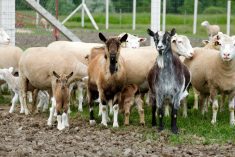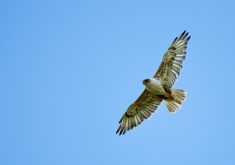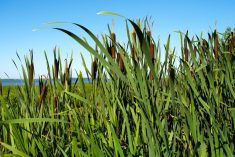You may think it is strange to go to an auction to pick up a wildebeest or a zebra, but ranching wildlife is just an innovative way of making money for South African farmers.
It’s similar to Canadian bison, deer, or elk ranching and can add a lot of value for producers.

“In South Africa, since 1991, we’ve seen a steady stream of conventional farmers integrating or possibly changing over to wildlife ranching,” Adri Kitshoff-Botha, chief executive officer of Wildlife Ranching South Africa, told a recent meeting of international journalists here.
Many conventional producers have also added a ‘game ranching’ aspect to their operation, raising antelope (the country is home to 45 species) or animals such as giraffe, zebra, hippopotamus, or Cape Buffalo. Raising wildlife has a big future, said Kitshoff-Botha.
“I expect we’ll see more conventional South African farmers integrating with, or possibly changing over to wildlife ranching, as farming becomes more and more difficult, and more and more challenging, which makes it less profitable,” she said during a presentation at Monate Game Lodge.
Read Also

Farming Smarter receives financial boost from Alberta government for potato research
Farming Smarter near Lethbridge got a boost to its research equipment, thanks to the Alberta government’s increase in funding for research associations.
- Read more: African farms are vastly different but share common bonds
- Read more: There’s a lot to love about Sussex cattle — but try finding any
Wildlife ranching is also a way for producers to explore alternative land use options and use marginal land while contributing to biodiversity and food security.
As part of the conference of the International Federation of Agricultural Journalists, some participants toured the Monate Game Lodge farm on a mini-safari on the 7,400-acre operation. The game lodge, located in Gauteng Province in the country’s north, has partnered with a breeding operation to conserve wildlife and protect natural areas.
Wildlife ranching — also known as game ranching — has four components: breeding, hunting, conservation, and game products. Private game farms developed in South Africa when a farmer accidentally fenced some waterbuck on his land in the 1960s.
Since then it has flourished.
South Africa now has the same number of game ranches as conventional cattle operations (roughly 12,000 of each) covering 20 million hectares of privately owned land. That’s triple the 6.5 million hectares of natural preserved habitat, which includes all provincial and national reserves operated by the government.
“More wildlife is under private ownership than in government parks,” said Kitshoff-Botha, whose voluntary organization is working with government to foster additional growth of an industry which has (directly and indirectly) created 140,000 jobs.
“We are working closely with our government to add unprotected areas to wildlife ranching. We all know that land doesn’t fall out of the sky. This is vast areas of rural land management, being used for the full value chain.”
The practice of wildlife ranching also increases food security, producing 120,000 to 150,000 tonnes of meat annually. (All of it consumed locally as game meat can’t be exported.)
“There is potential in wildlife ranching in Africa,” said Kitshoff-Botha. “If you consider the population in South Africa that can be supplied with healthy protein, there is such a huge market.”
Wildlife ranchers still have challenges with legislation, but the group is working closely with the federal Department of Agriculture.
Wildlife ranching also offers opportunities for tourism. International and local tourists like to go to see wildlife, and many wildlife operations have lodges or chalets available for rental.
“About 70 per cent of all visitors to South Africa do wildlife-related tourism,” said Kitshoff-Botha.
The tourism aspect of wildlife ranching is a new venture, and the organization doesn’t even have figures on how much revenue it brings in.
















